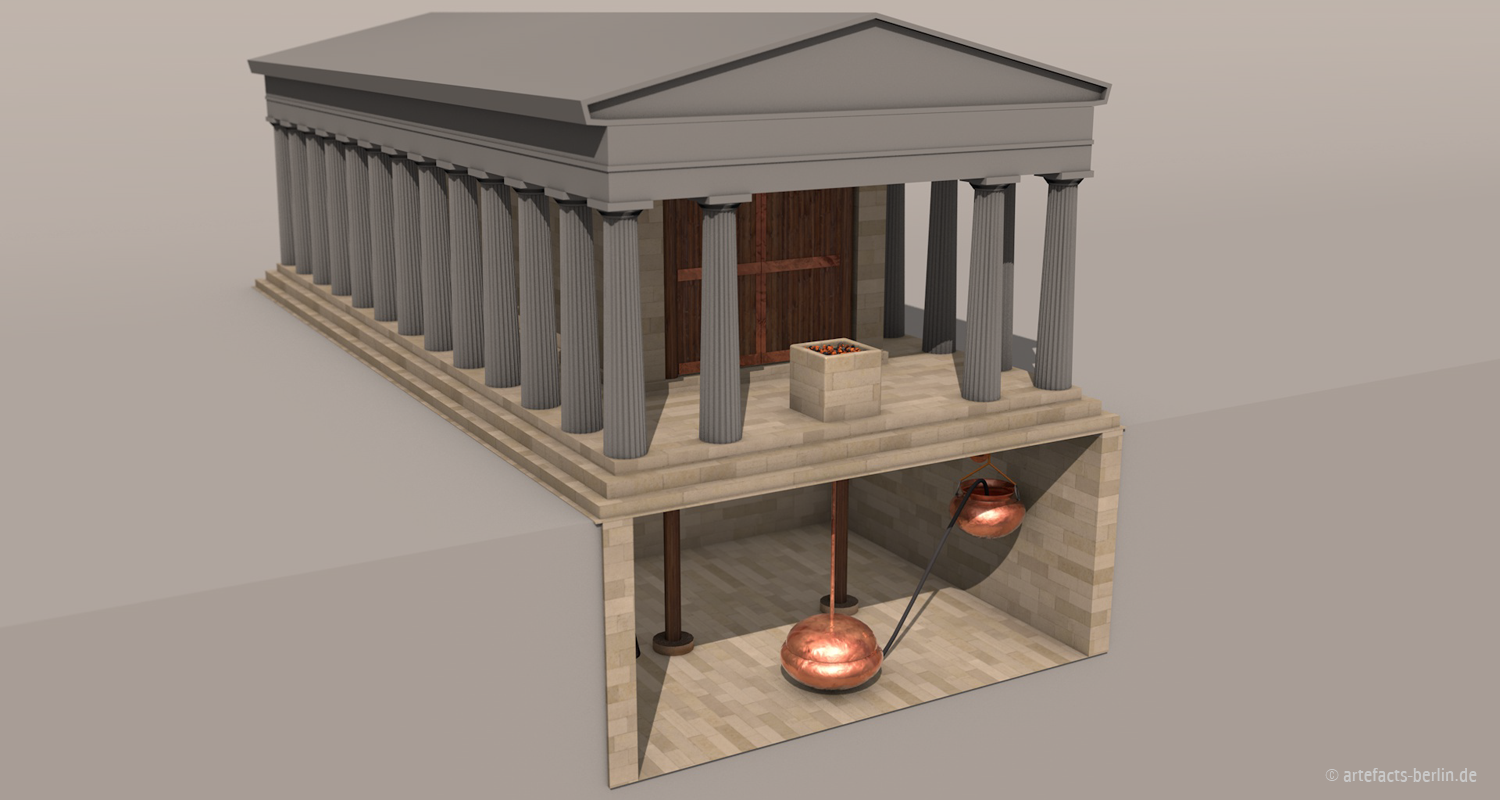About the project
Heron of Alexandria (c. 10-70 CE) was a Greek-Egyptian mathematician and inventor. Heron lived in Roman Egypt and was a representative of Hellenistic Science. He invented a steam-powered engine, called the Hero-Engine or aeolipile, a wind wheel, a vending machine and even the pantograph. He was experimenting with other steam-powered devices as well. One of his inventions were automatically opening temple doors, powered by a fire altar and a hydraulic system.
The automated temple doors are described in his writings as invention “number 37”. The idea was, that temple doors should open automatically when a fire is lit and close again, when the fire distinguishes. By lighting the fire above ground in an altar in front of the temple, heat would form and build up pressure into a soldered vessel beneath the temple. The liquid within the vessel (probably water, but Heron also thought about quicksilver) would get pushed through a hose into another vessel hanging from the ceiling and connected to the underground doorposts of the temple doors.
By the added weight, the second vessel would pull the ropes attached to the door posts and the doors would open “magically” for the spectators. When the fire extinguishes and the heat passes, the liquid would get sucked back into the first vessel, the second vessel would become lighter and the well-balanced counter-weight would pull in the other direction to close the doors.
Literature
- Drachmann, Aage Gerhardt (1963). The Mechanical Technology of Greek and Roman Antiquity: A Study of the Literary Sources. Madison, WI: University of Wisconsin Press.
- Hero of Alexandria (1851). “Temple Doors opened by Fire on an Altar”. Pneumatics of Hero of Alexandria. Bennet Woodcroft (trans.). London: Taylor Walton and Maberly.




